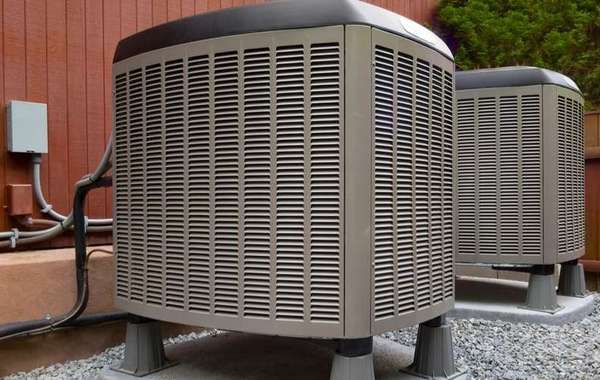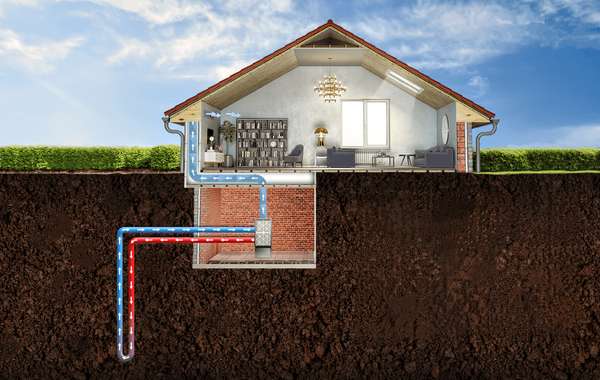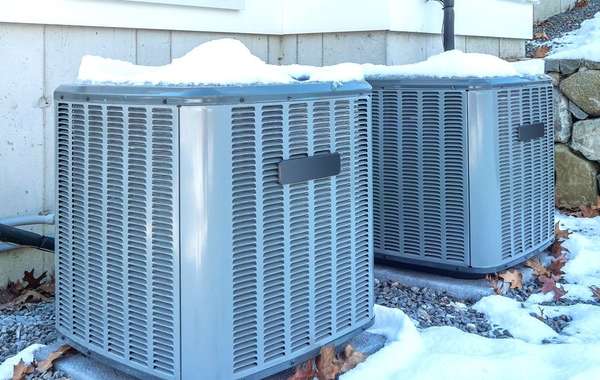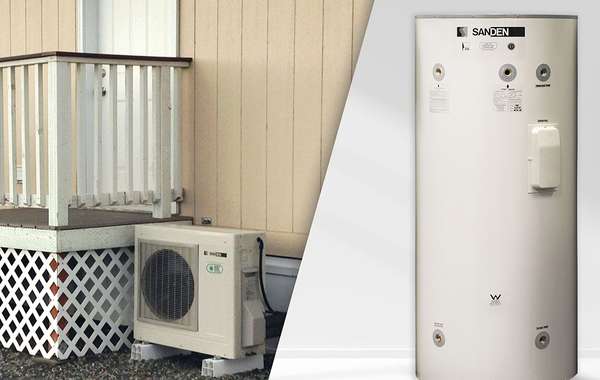Which cold climate heat pumps are best?
Heat pumps that work efficiently in very cold climate conditions are constantly improving, both in terms of performance and efficiency, but also in terms of sustainability for the materials and chemicals used in their manufacturing and operation. So, one of the first things to say in trying to answer the question, "which heat pumps are best in cold climates?" is to answer truthfully with, "that depends!"
Think of it like asking the same question about cars, there's a big difference of opinion based on personal experience, preferences or just down to design tastes as to which is the best car, and the same can be said about heat pumps!
The other thing to consider is when you're looking at this heat pump for cold climates guide - as when this article was first written in April 2023, we were aware of a whole new generation of high efficiency cold weather heat pumps being developed, as a result of the US Department of Energy initiative, the Residential Cold-Climate Heat Pump Technology Challenge from 2021 / 2022 and 2023.
With heat pump sales in North America experiencing significant growth, with the market projected to increase at a Compound Annual Growth Rate (CAGR) of around 9.6% to 2032, driven by rising demand for energy-efficient heating and cooling, we're going to be as objective as possible in terms of performance, reliability, sustainability and ownership experience as we do our best to answer which heat pumps are best in cold climates.
The factors to consider to accurately decide which heat pump is best for a particular home are:
- Which climate zone is the heat pump to be installed in? And by this we mean how cold does it get in winter, how hot in summer, and what is the relative humidity in each season?
- How well built is the home the heat pump is to be installed in and how big is it? And by this we mean how well insulated is it, and how airtight is the home coupled to its size and the exterior surface area - or in other words how much heating capacity does the home need?
- Does the home have an existing central heating system or is it a new home? And, if it's an existing home, does it have a furnace and air ducting system already installed? Or, does it have a boiler and a hot water heating system?
- Does the home have a Heat Recovery Ventilation or Energy Recovery Ventilation system? (HRV or ERV system?)
- Is the heat pump going to be the primary / only heating system for the home? Because heat pumps come in different types that work differently. There are ground source heat pumps (GSHP's) which are often incorrectly called geothermal heating systems, there are air source heat pumps (ASHP's), which can be central ducted heat pump systems, or they can be ductless mini-split heat pumps. There are also air to water heat pumps (AWHPs)which can either be systems that replace a boiler for hydronic hot water heating systems, or that are used to heat swimming pools efficiently, or they can be used to heat the hot water in homes as a heat pump hot water tank system.
- How reliable is the electricity supply in this area and how much does electric cost? Here we're looking to see if the heat pump will need a backup heating system, and to see if it's possible to reduce heating costs by installing a heat pump.
One criticism of heat pumps in the past and a reason why they haven't been universally adopted as the heating system of choice, is how they operate at low temperatures. (Although we have had a great experience with our Mitsubishi heat pump in the frozen and desolate wastes of Quebec.
In colder US states (think Alaska, Maine, Vermont, Montana and Wyoming), and colder provinces in Canada (Nunavut, Yukon, Northwest Territories, Alberta and Quebec) is because early generations of heat pumps often needed backup heating with gas furnaces or electric resistance elements because they weren't able to supply sufficiently high performance in very cold weather to keep a home warm. This all added to the complications, cost and overall efficiency of heat pumps in cold climates.

How do cold climate heat pumps work?
What exactly are they, and how do they work? In short, a heat pump is simply an electrical device that is capable of transferring heat from one place to another. Though it may seem counterintuitive at first, heat can actually be extracted from cold air and added to warmer air.
To explain this in a more practical manner, let us step back a little bit to understand the basics. First of all, for the sake of an analogy, let’s imagine heat as a big body of water. Logically, water would flow from a higher place to a lower place. Similarly, heat naturally flows from a hotter place to a colder place.
So how is it that we can extract heat from a cold place and send it to a warmer place? Well, it is a little bit like moving water from a low place to a high place. All you need is a pump! Heat is actually defined by the movement of the molecules that make up matter.
So in essence, all the air in the world that is warmer than absolute zero (-273 °C, the temperature at which molecules actually stop moving) contains some amount of heat. So technically, it is possible to extract heat from air of any temperature and send it somewhere else, all it takes is a little energy - for the full explanation of how heat pumps work, see this guide.
What is considered a cold climate when looking into heat pumps?
Cold Climate Heat Pump (CCHP) means a central HP that can provide mechanical air heating utilizing refrigerant vapor compression cycle or a combination of mechanical air heating and electric resistance heating at low outdoor temperature, at least as low as 5 ºF.
Cold climate heat pumps are built to work efficiently in conditions down to -15 ºF (-26 °C), with some systems maintaining an efficiency of over 200% at 5 ºF (-15 ºC).
- 5 ºF (-15 ºC) Cold Climate Heat Pump means a Cold Climate Heat Pump capable of heat pump operation down to 5 ºF (-15 ºC) ambient temperature.
- -15 ºF (-26 ºC) Cold Climate Heat Pump means a Cold Climate Heat Pump capable of heat pump operation down to -15 ºF (-26 ºC) ambient temperature
What is a ducted heat pump?
A ducted heat pump is a unit that works by providing conditioned air to the whole home or specified zones through vents or ducts. These are generally fitted into the home's ceiling space and circulate heated or cooled air throughout the entire home.
What is a mini-split heat pump?
A ductless mini-split heat pump - also simply called a mini split or zoned HVAC – is a single head unit mounted on the inside wall that is connected to an exterior compressor - It is called ‘ductless’ because it only conditions the air in one room, rather than being delivered to different rooms through ducts like a centralized core unit would do. This makes them an excellent option as supplementary heat or cooling for high-use rooms or additions that may not have access to the full home system.
A ducted heat pump may be the better option if you have central air conditioning with well-maintained ductwork. Ductless mini-split systems often take the lead for homes without existing ductwork or on historic properties with specific requirements for renovation.

Are heat pumps the best for cold climates?
The short answer is; yes! The latest research shows that compared to back in the day, heat pumps are now up to three times more efficient in winter temperatures as traditional gas, heating oil, or electric systems.
If blizzards, ice storms or even just strong winds are recurrent in your region, the chance of a power outage goes up significantly during the winter months, and it might be a good idea to have a plan B. Here are a few things you can do in advance to prepare in case you have an issue with your heating system due to either a power outage or a mechanical problem:
- Install a backup heating source, such as a standby stove or heater, that does not rely on electricity. For example: a propane or natural gas fireplace insert.
- If you have a wood burning stove or fireplace, be sure you’re stocked up on wood and have the chimney or unit serviced and cleaned every fall.
- Consider investing in a whole-house generator that can be used to run electric heaters if needed. As much as we advocate for avoiding using fossil fuels - in a choice between someone freezing or burning some fossil fuels then there's no choice to make!
Do all heat pumps work in below freezing temperatures?
Yes, heat pumps work in below freezing temperatures. In the past, some heat pumps worked better in frigid climates than others. However, thanks to technological advancements, most heat pumps on the market today can keep you and your family warm on even the coldest of winter days in Canada or the US.
An important consideration, is that heat pumps used to operate much less efficiently when temperatures drop to about 25 Fahrenheit for most systems. They worked great as long as the temperature remained above 40F. So, make sure to make your choice from Cold Climate Heat Pumps specifically, and from the latest models, as the technology keeps improving day by day!
How about the refrigerants in low temperature heat pumps - which are best?
When it comes to cold-climate heat pumps, one of the key considerations is the choice of refrigerant. Refrigerants are essential for transferring heat, and their environmental impact is significant. With increasing focus on sustainability, there has been a shift toward selecting refrigerants with a low Global Warming Potential (GWP) for heat pumps that operate in colder temperatures.
The reason it is important is that all heat pumps leak refrigerant, and so they need topping up, and the less of these chemicals we release into the atmosphere over a heat pump's 20 year lifespan, the better.
What is GWP, and Why Does it Matter?
GWP is a measure of how much heat a refrigerant can trap in the atmosphere compared to carbon dioxide over a 100-year period. The higher the GWP, the greater the potential for climate change. With global efforts to combat climate change, using low-GWP refrigerants has become a priority in the HVAC industry, including for heat pumps in cold climates.
Best Low-GWP Refrigerants for Cold-Climate Heat Pumps
Despite that the interest in heat pumps is growing, we're not hearing many people in North America talking about the choice of refrigerant - probably because the heat pump manufacturers and HVAC industry here seem to be evolving slower than in Europe. Basically though, on this side of the pond we should be at least aiming for a heat pump with R-32 (Difluoromethane) in it - with a GWP of 675, or preferably another more popular low-GWP refrigerant, R-454B, which has a GWP of around 466.
However what are just appearing from certain manufacturers are R-290 or propane refrigerant filled heat pumps. R-290 is a natural refrigerant with a GWP of just 3, making it one of the most environmentally friendly options available, so if you can wait a little longer before buying a heat pump, we'd recommend doing so and then going for one of the models with R-290 in.
Which heat pump brands supply models with R-290 refrigerant in?
Brands that have R-290 refrigerant heat pumps in spring 2025 in the U.S. and Canada include: Panasonic, Carrier, Daikin, Trane Technologies, Mitsubishi Electric, Bosch, and LG Electronics are leading the way in using low-GWP refrigerants for heat pumps, in line with the EPA Heat Pump Challenge.
These companies are mostly using refrigerants like R-32 and R-454B, while some are even exploring natural refrigerants like R-290 (propane) for even lower environmental impact. The shift towards low-GWP refrigerants in the industry is a key step in reducing the environmental impact of heating and cooling systems.
What cost to expect for cold weather heat pumps?
Each type of heat pump has different associated costs for the unit and installation:
Ductless mini-split is one of the cheapest options, since installation is fairly simple and the cost of labour is lower than other heat pumps. We estimate these heat pumps cost somewhere between $2,500 and $6,000.
Air-source heat pumps are generally affordable compared with other systems, so long as ductwork is already installed in the house. Switching from typical resistance heating to an air-source heat pump can open up opportunities for long-term savings. On average, unit and installation costs come to around $3,500 to $7,500.
Geothermal heat pumps have high startup costs because of the extensive work required for installation. Since it uses heat from the ground, the pipes must be laid in dug-out trenches at least 4 feet down. The labour for this installation can be costly and varies depending on how deep the pipes must be installed. On average, you can expect to pay $13,000 to $36,000 total for the unit and installation.
The overall total average for a standard unit and installation together is around $4,500 to $8,000.

Check if you are eligible for grants!
CleanBC, BC Hydro and FortisBC offer rebates up to $6,000 for the purchase and installation of a rebate eligible heat pump, depending on how you currently heat your home - federal rebates of up to $5,000 for space heating upgrades are no longer available through the Canada Greener Homes Grant, which was a separate program with its own eligibility criteria and application process.
In Canada there is the Canada Greener Homes Loan and the Oil to Heat Pump Affordability program which remain open - in fact in some areas like Manitoba, new heat pump grants have just been added in spring 2025.
Conclusion: choosing the right heat hump for Cold Climates in 2025
When choosing the best heat pump for cold climates in 2025, it’s essential to focus on performance, efficiency, reliability and sustainability. Leading brands like Mitsubishi Electric, Daikin, and Carrier offer advanced systems designed to keep your home warm even in the harshest conditions, with some models functioning in temperatures as low as -15°F (-26°C). These heat pumps utilize innovative technologies like inverter-driven systems and variable-speed compressors to optimize both comfort and energy efficiency.
As demand for eco-friendly solutions grows, it's clear that heat pumps with low-GWP refrigerants like R-32 and R-454B are increasingly the go-to choice for homeowners who want reliable heating without compromising on environmental responsibility.
By focusing on high-performance systems that also offer significant energy savings, you're not only enhancing your home’s comfort but also making a positive impact on the planet. The best heat pumps of 2025 are designed to be energy-efficient, reliable, and environmentally friendly, offering long-term value and helping to reduce your carbon footprint.
Now you know more about the best heat pumps for cold climates for 2025 in Canada and the US, learn more about efficient home heating systems for eco homes and sustainable home building in these pages:
Find more about green home construction in the Ecohome Green Building Guide pages - also, learn more about the benefits of a free Ecohome Network Membership here. |




























Comments (0)
Sign Up to Comment